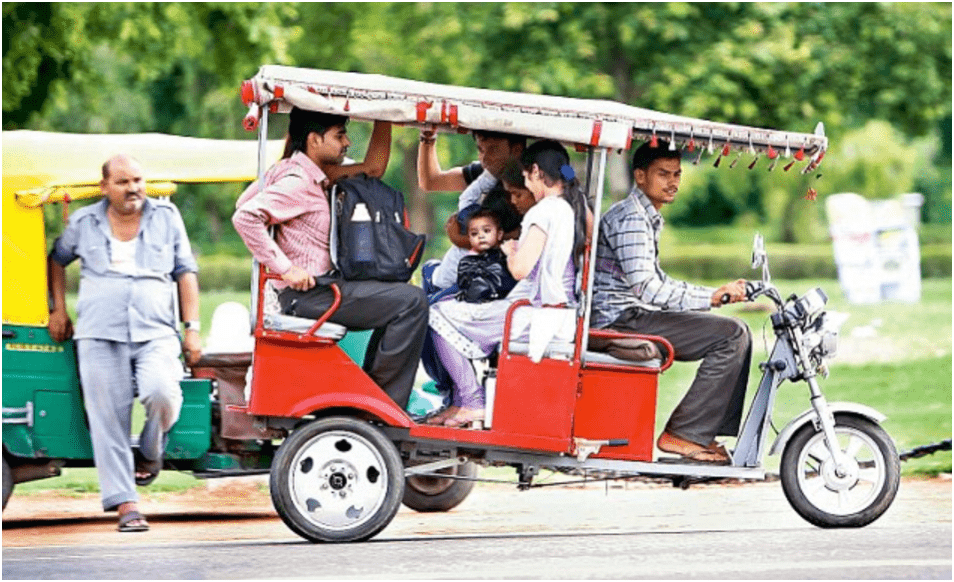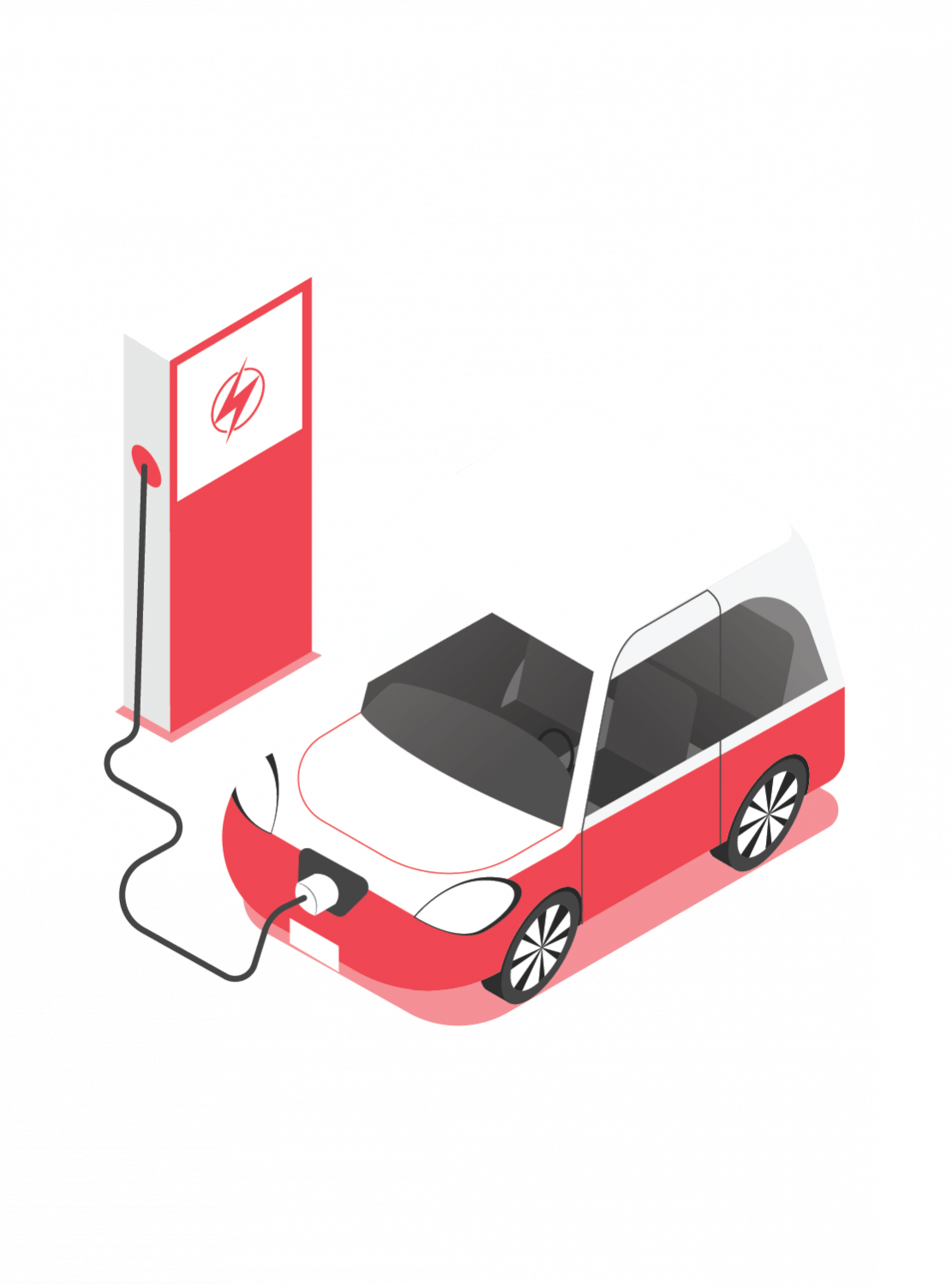Electric Rickshaws Leading India's EV Revolution, Driving Towards Green Mobility

Due to its expanding cities and dense urban population, India has long been linked with the ubiquitous three-wheeled rickshaws that navigate the chaotic streets. But in recent years, these iconic vehicles have undergone a spectacular transformation as electric rickshaws, or e-rickshaws, have emerged as the pioneers of India’s electric vehicle (EV) revolution. The underlying drivers of electric rickshaw adoption and their transformative impacts on India’s transportation infrastructure are examined in this. Due to its expanding cities and dense urban population, India has long been linked with the ubiquitous three-wheeled rickshaws that navigate the chaotic streets. These fundamental forms of transit have been a lifeline for millions of Indians, moving people and goods across congested cities. However, e-rickshaws, also known as electric rickshaws, have lately experienced a significant transformation and are currently driving India’s electric vehicle (EV) revolution.
As e-rickshaws gain popularity, the way urban transportation has historically been managed is changing. With their sleek aesthetics and silent electric engines, these automobiles reflect a shift towards sustainable mobility that responds to the urgent environmental concerns of the country. As India suffers from issues like air pollution, carbon emissions, and a heavy reliance on fossil fuels, e-rickshaws have emerged as a beacon of hope, guiding the country toward a cleaner and greener future. India’s perception of and experience with urban transportation has changed as a result of the advent of electric rickshaws. It marks the end of the period of traditional rickshaw noise, pollution, and inefficiency and the beginning of a new era of environmentally friendly transportation. We get a thorough grasp of the causes influencing India’s EV revolution as we look further into the rise of electric rickshaws, as well as the revolutionary potential these vehicles hold for creating a cleaner, more livable future for cities around the nation.
1.The Need for Sustainable Mobility: Air pollution, carbon emissions, and reliance on fossil fuels are just a few of India’s environmental problems. Traditional rickshaws with diesel or petrol motors have a big impact on these problems. The Indian government has promoted the use of electric vehicles, with e-rickshaws at the vanguard of this transition, in recognition of the critical need for sustainable mobility options.
2. Benefits of Electric Rickshaws: Compared to their traditional counterparts, electric rickshaws have a number of benefits. They are first and foremost eco-friendly, emitting no exhaust emissions and lowering carbon footprints. This characteristic aids in addressing the pressing problem of air pollution in Indian cities. E-rickshaws are also less expensive to operate than their counterparts powered by fossil fuels because they require less maintenance and have lower fuel costs.

3. Improved Livelihood prospects: The development of new livelihood prospects for drivers is one of the electric rickshaw revolution’s most significant effects. E-rickshaws are reasonably priced, and drivers can start their own enterprises with little capital. This has given many people the opportunity to start their own businesses and generate secure incomes, especially those from economically disadvantaged backgrounds.

4. Better Passenger Experience: Riding in electric rickshaws is more pleasant and comfortable for passengers. These cars have improved suspension systems, are quieter, and cause less vibration than typical rickshaws. Electric rickshaws have taken the place of manually pulled or manually operated ones, improving commuters’ safety and convenience as well as the quality of transportation.
5.Government Support and Initiatives: The adoption of electric rickshaws has been considerably aided by the Indian government. The government has implemented a number of rules, incentives, and subsidies to encourage the development, sale, and use of electric vehicles, including e-rickshaws. These initiatives aim to make electric rickshaws more accessible and affordable for drivers, hastening the adoption of these cars across the country.
6. Development of Charging Infrastructure: To address the issue of range anxiety and promote the widespread use of electric rickshaws, the Indian government has focused on building a robust network of charging infrastructure. There are now public charging stations in cities and on major thoroughfares so that e-rickshaw drivers may easily recharge their cars. The presence of charging infrastructure has allayed worries regarding the short range of electric rickshaws, making it simpler to integrate them into the existing transportation system.
7. Impact on Societies, Economy, and Environment: The adoption of electric rickshaws has enhanced both society and the environment. From a socioeconomic standpoint, e-rickshaws have created new employment opportunities, particularly for marginalized people. Additionally, using electric rickshaws more frequently has reduced carbon emissions.
Conclusion: With the emergence of electric rickshaws, a brand-new era in India’s transportation system has dawned. By providing an alternative to traditional rickshaws that is more environmentally friendly, these green automobiles have changed urban mobility. Due to their positive environmental impacts, accessibility, and enhanced passenger experience, e-rickshaws have developed into a symbol of growth and change in India’s EV revolution. As long as the government continues to support their adoption and charging infrastructure expands, electric rickshaws are poised to play a big role in altering India’s urban transportation and achieving a greener and more sustainable future.





